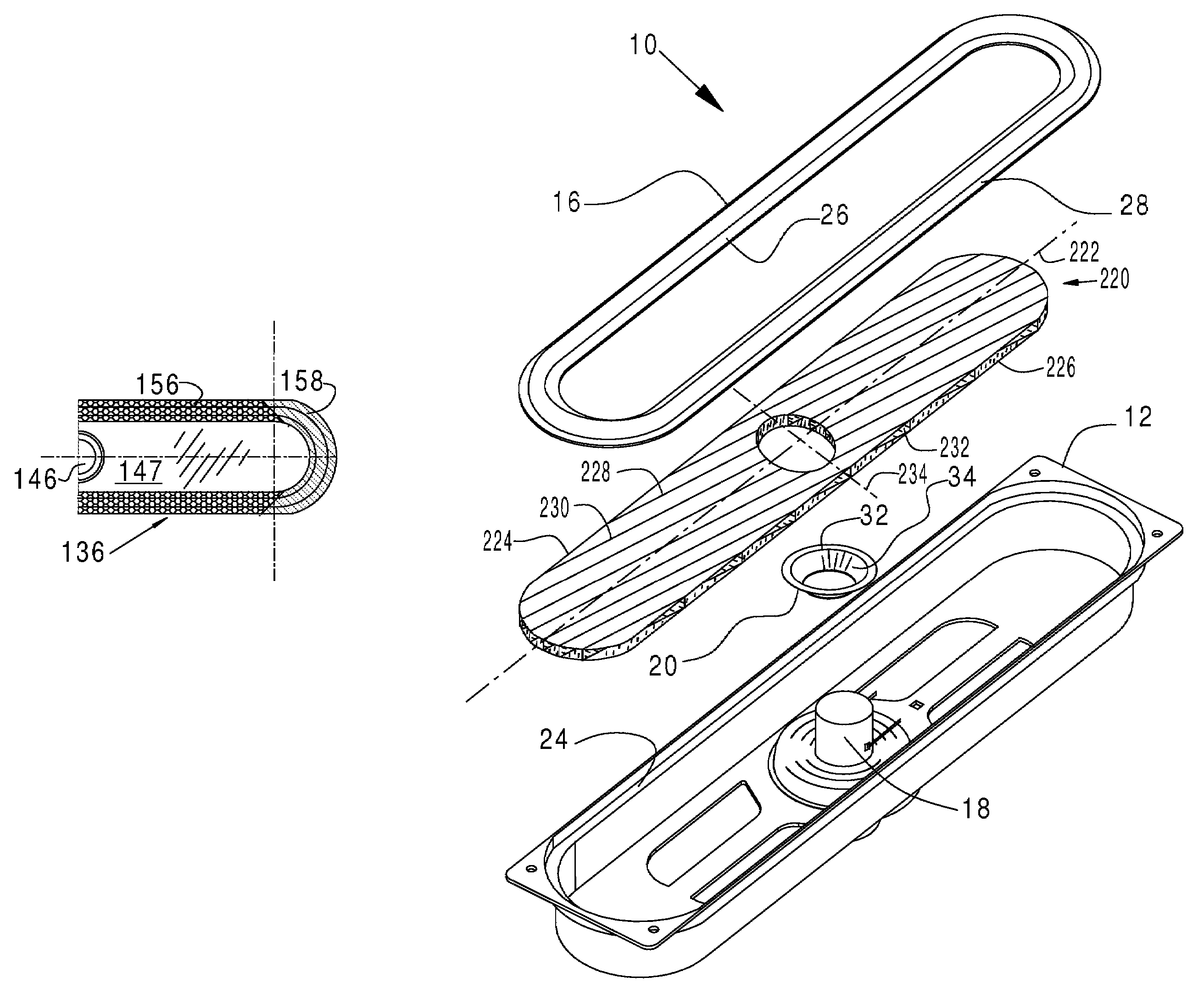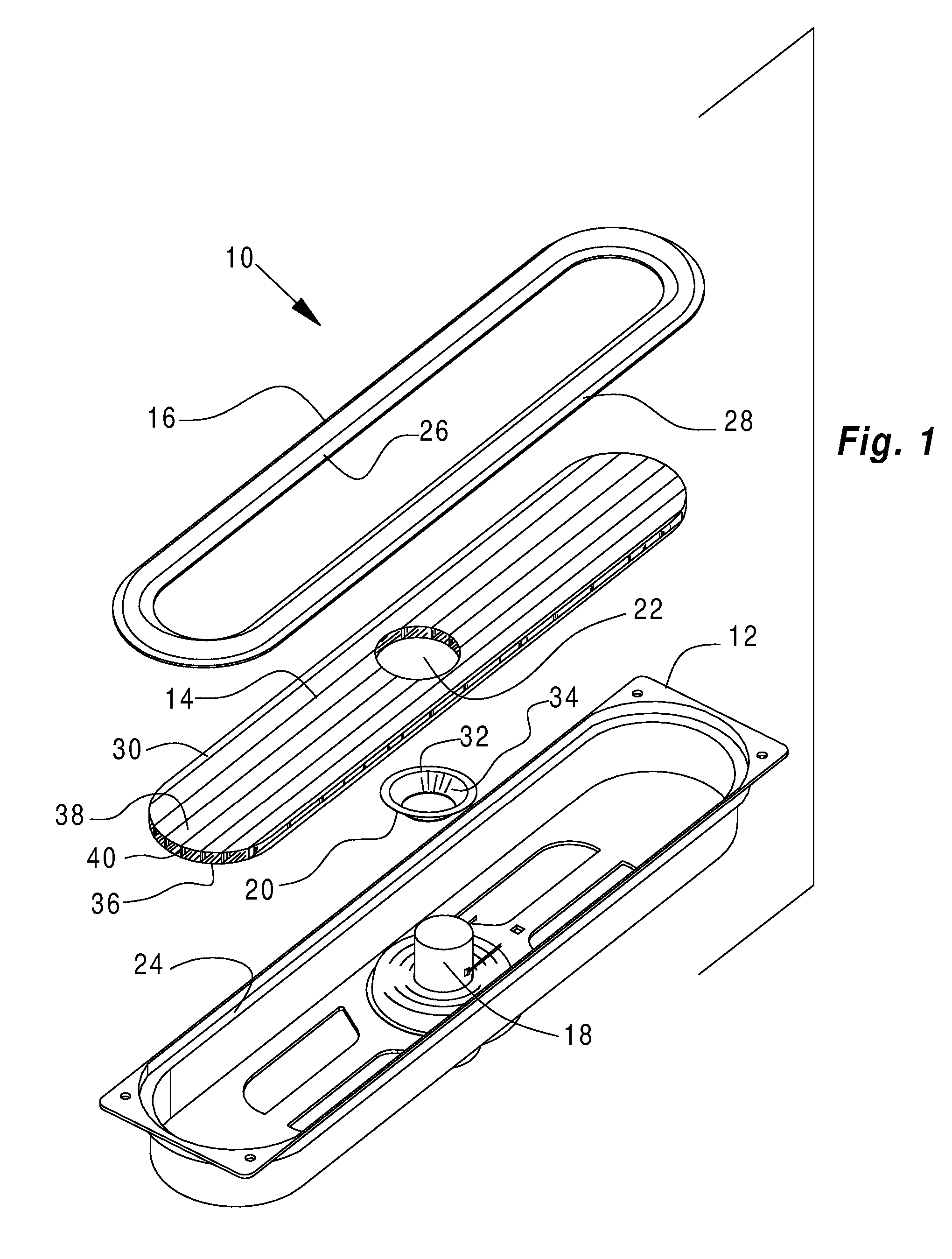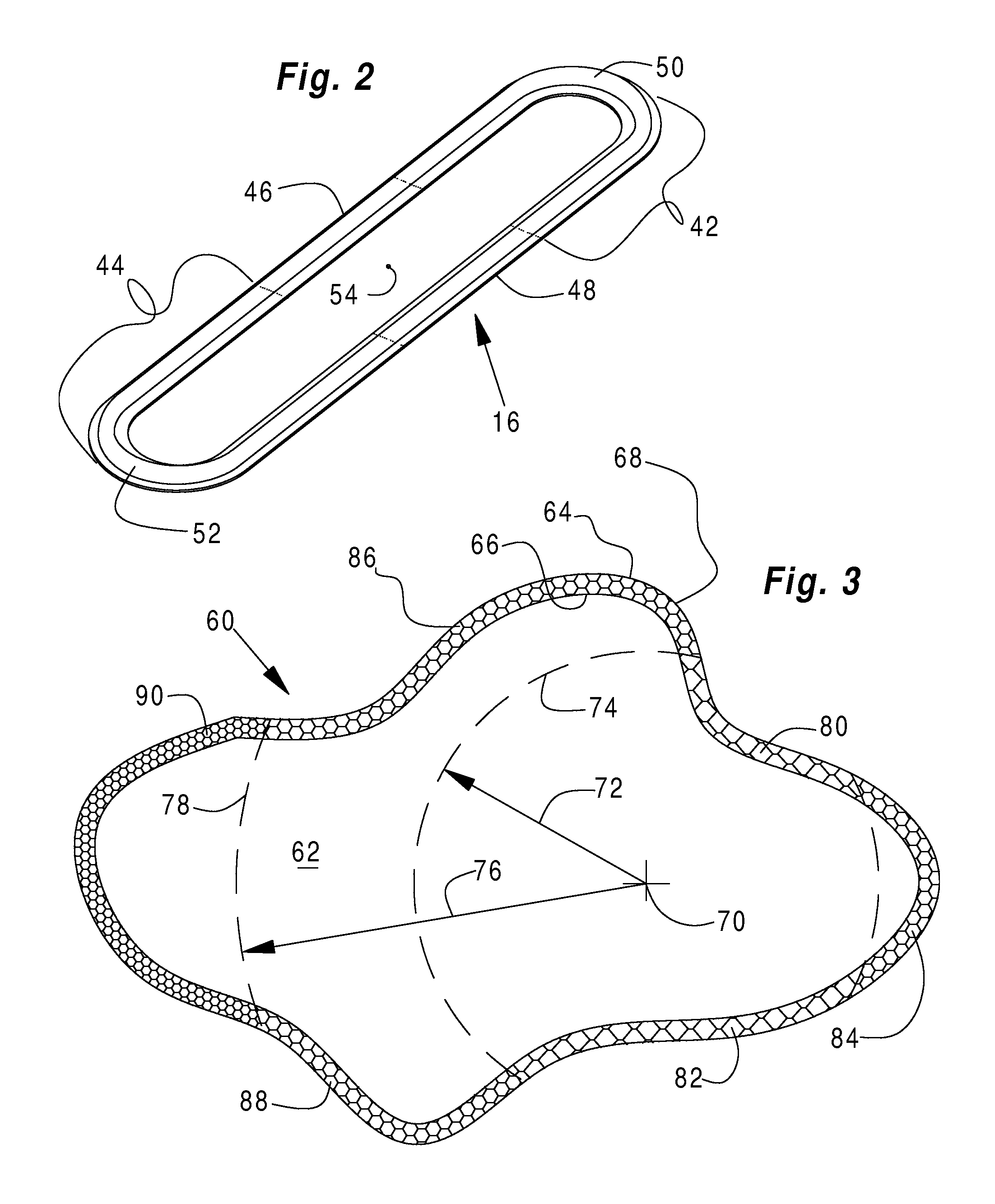Speaker edge and resonator panel assembly
a resonator panel and speaker edge technology, applied in the direction of transducer diaphragms, electrical apparatus casings/cabinets/drawers, instruments, etc., can solve the problem of non-uniform vibration damping profiles, achieve damping acoustic vibrations, increase damping capacity, and influence the quality of sound emitted
- Summary
- Abstract
- Description
- Claims
- Application Information
AI Technical Summary
Benefits of technology
Problems solved by technology
Method used
Image
Examples
embodiment 134
[0070]FIGS. 11 through 15 and 17 illustrate in plan form various embodiments of complex speaker edges according to the present invention. In these embodiments the resonator panel 147, the radiator 144 and the driver 146 are common to all embodiments. In all embodiments the speaker edge is mounted to the outer periphery of the resonator panel 147. In the embodiment 134 of FIG. 11 the complex speaker edge 150 has a first section 148 and a second section 154. Different speaker vibration damping capacities are provided by inserting a body of material in the longitudinally extending channel as shown, for example, in cross-section in FIGS. 7 through 10.
[0071]In the embodiment 136 of FIG. 12 the complex speaker edge has a first section 156 and a second section 158. Different speaker edge vibration damping capacities are provided by using a greater volume of material in second section 158 as shown, for example, in cross-section in FIGS. 5 and 6. The embodiment 138 of FIG. 13 is similar to t...
embodiment 140
[0072]In the embodiment 140 of FIG. 14, the opposed boundaries 168 and 166 of the complex speaker edge have about the same characteristics. The channel 164 has physical characteristics that differ from those of the opposed boundaries 166 and 168. The channel in end section 170 differs in its physical characteristics from channel 164 in the median section.
embodiment 142
[0073]The embodiment 142 in FIG. 15 is similar to the embodiment of FIG. 14 except that the end of the resonator panel 174 is squared off rather than being rounded, and the speaker edge is shaped to conform to the plan form of the resonator panel 174. The inner 182 and outer 176 boundaries are similar in their physical characteristics. The physical characteristics of the channel 178 in the first section are different from those in the channel 180 in the second section.
[0074]FIG. 17 is provided to illustrate a single speaker edge in which the acoustic vibration damping properties of the speaker edge 188 are substantially constant around the entire longitudinal length of the speaker edge.
[0075]The various speaker edges illustrated in FIGS. 11 through 15 can be oriented with the pleat or channel depending in either direction from the normally outer surface of the resonator panel, and there may be two or more channels in a single speaker edge, if desired. The pleat or longitudinally ext...
PUM
 Login to View More
Login to View More Abstract
Description
Claims
Application Information
 Login to View More
Login to View More - R&D
- Intellectual Property
- Life Sciences
- Materials
- Tech Scout
- Unparalleled Data Quality
- Higher Quality Content
- 60% Fewer Hallucinations
Browse by: Latest US Patents, China's latest patents, Technical Efficacy Thesaurus, Application Domain, Technology Topic, Popular Technical Reports.
© 2025 PatSnap. All rights reserved.Legal|Privacy policy|Modern Slavery Act Transparency Statement|Sitemap|About US| Contact US: help@patsnap.com



